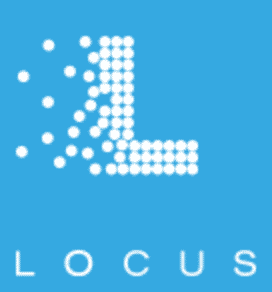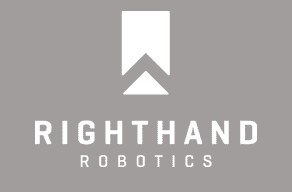9 Industrial Robots for Your Warehouse
Robotic lawnmowers and vacuum cleaners make great feature stories for your local nightly news but they’re hardly what investors are thinking of when they look for truly disruptive applications of robotics to invest in. The usefulness of robots and the transformation that the 4th Industrial Revolution will bring about can be described in three steps:
- Replacing people in low value and/or dangerous jobs – Will result in people being employed in jobs with more value-add, while the menial tasks will be executed quicker, cheaper and with more precision. This will also make things cheaper.
- Allowing us to do things we were’t able to do before – Will open up a whole lot of boundaries and allow us to solve problems we are struggling with, for example resource scarcity.
- Fundamentally transforming our lives and what we do for our paychecks – Is revolutionary and self-evident – just read some early Asimov.
While these three steps in the advancement of robotics are not necessarily sequential, the first step is the most organic step emerging from automation. If you recall from our recent article on investing in industrial robots, automation is a way to improve efficiency by using machines that are pre-programmed to do a sequence of actions, one after the other. Robots on the other hand are flexible in reacting to their environment. They choose how and when to do stuff, and can even learn new stuff.
In this article, we’re going to focus on industrial robots that are involved in materials handling – moving things from one place to another and keeping track of them – as this area seems to be the most competitive among startups at the moment, even though it may be low on the sexiness scale. According to Markets and Markets, the automated material handling market is expected to grow +7.9% per year between 2015 and 2022.
Founded in 2015, Colorado startup Canvas Technology has taken in an undisclosed amount of funding to provide an end-to-end autonomous delivery of goods and create a safe and powerful autonomous technology to power both indoor and outdoor driving. They’ve developed their own 3D camera solution and paired it with algorithms to ensure the robots react to their environment accurately and safely. Canvas are still under the radar, currently doing pilots of their indoor technology, which will be available commercially soon.
Founded in 2003, Pennsylvania startup Seegrid has taken in $53 million in funding led by Giant Eagle, a US supermarket chain. Seegrid is a more established player, also using 3D visual technology based on ‘stereo’ imaging with two cameras. They offer different vision guided vehicles like pallet trucks, tow tractors and couriers, and also have a software called Supervisor, to oversee your fleet of autonomous vehicles.

With reference clients like Whirlpool, Amazon, Volvo, BMW and Jaguar, the Company has seen half a million miles without an accident in actual production environments. Seegrid is now looking to team up with with auto makers and supply their computer vision technology for self-driving cars. The company had revenues of $6.3 million in 2014 before going into bankruptcy of all things. Coming out of bankruptcy in 2015, they appear to be strengthened by a new venture investment from Giant Eagle, and ended 2016 with double orders vs the previous year, based on increased demand from both existing and new customers. You can read more in our previous article on Seegrid.
Founded in 2014, California startup Fetch Robotics has taken in $23 million in funding to develop a small robot platform called Freight which can transport up to 100kg. Freight can be equipped with a shelf and cart for transporting things, and sensors, so you can collect inventory or shelf data. This all comes with Fetchcore, a fleet management software that helps setting up rules of transportation, pickup and drop-off locations, preferred routes etc. for your robot fleet.

Source: Robohub
Articles on Fetch Robotics mention another robot, called Fetch (seen above), which has an arm, and is able to work with Freight lifting 6kg at a time. Strangely, the company website doesn’t mention this product, so perhaps they decided not to continue developing it over the course of the past 18 months. Aside from this, their website already gives a sales contact, and Freight should be hitting the market soon, after two years of development.
Founded in 2011, Singapore startup Grey Orange Running has taken in $30 million in funding so far to develop 2 product lines, the Butler and the Sorter.

Grey Orange already has 40 clients and claims an incredible 90% market share in India’s warehouse automation market. The Butler is an autonomous robot moving 2-sided storage racks according to order data and other real-time inputs, and besides putting stuff where it is needed, it also optimizes warehouse space using the 2-sided racks and digested data. The Sorter is an automated parcel sorting belt which can handle parcels of all kinds of shapes and sizes. This is a big deal because ‘classical’ sorters can only handle regular or irregular shapes, not both at the same time.
Founded in 2012, RoboCV is a Russian startup that has taken in $3.5 million to develop their own method of automating pallet movements across warehouses. Their technology is called RoboCV X-MOTION NG which sounds very robo-futuristic, and allows electric pallet truck to run on autopilot, and handle all kinds of pallet based activities themselves. They list “intelligent human-equipment interaction, easy setup and minimal changes in warehouse systems, regulation and actions” as their differentiator.

Already having major references such as Samsung and Volkswagen, they are getting ready for the full commercial launch of their X-MOTION NG technology this February. As a next step, RoboCV are planning to work with STILL GmbH on electric truck autopilot solutions.
With around $8 million in funding to spend, Massachusetts based Locus was spun out of Quiet Logistics in 2014, the same company who created the Kiva robot which is now owned and used by Amazon in their warehouses. Their machines, LocusBots, are smaller freight robots, similar in looks to Fetch mentioned above.

LocusBots move independently and collaborate with workers, and are said to improve warehouse productivity by 3-5 times. Humans pick and lift, while the Bots deliver across the warehouse floor. Coming with software to integrate them into warehouse management systems, provide real-time measurements and metrics, and a mobile app to manage your Bots, they can be deployed as a plug & play solution and scaled up easily – this being their main competitive selling point.
Founded in 2014 as a spinout from Dresden University of Technology, German startup Revobotik has taken in an undisclosed amount of funding to producing high speed packing/sorting robots. Their rotating drive can move up to 10kg 100 times a minute:

At this speed the technology can perform at twice the pace of existing automated devices. This represents a savings of 50% plus it frees up warehouse space. While this sounds more like automation to us, the company is admittedly pushing for expansion to other robotic applications of their patented drive technology.
Established in 2008, Indian startup ArkRobot has taken in just $350K from Qualcomm to develop another flavor of a small-medium size warehouse delivery robot, with the ability to move at 4km/h and carry a payload of 250kg.

Features include vision-based movement, choosing the best route across the storage space and cooperation with other robots from the fleet. Currently operating in India, the company is developing modified versions of the original that will be able to increase payload to 500kg, the highest we’ve seen with this type of robot. The team recently won India’s QPrize for startups and are trying to expand towards Europe.
Founded in 2014, RHR grew out of a team of researchers from Harvard Biorobotics Lab who were researching grasping systems, sensors, computer vision, and applied machine learning. The startup has taken in $3.3 million in funding to develop a robotic hand equipped with sensors that can handle a large variety of items.

Source: Robotics Business Review
While applications in picking-sorting-packaging for warehouses are evident, we’d be interested to see if further refinement brings Righthand’s products into other sectors like healthcare or space.
So there you have it. 9 companies working on industrial robots that are not only automating boring and cumbersome tasks which have to be done anyway, but also doing so flexibly and intelligently.
Looking to buy shares in companies before they IPO? A company called Motif Investing lets you buy pre-IPO shares in companies that are led by JP Morgan. You can open an account with Motif with no deposit required so that you are ready to buy pre-IPO shares when they are offered.


No comments:
Post a Comment